The town of Annecy and its lake are surrounded by beautiful mountains and spectacular passes. This allows holidaymakers to practice all mountain sports according to their level and to discover the alpine fauna and flora.
Discover the mountains around Lake Annecy
The pure lake of Annecy is surrounded by beautiful mountains which are there to frame it. Our discovery tour will take you around the lake. You can also discover them during a helicopter flight.
The massif des Bornes
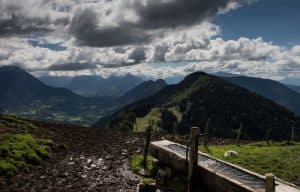
At the beginning on the left of Annecy, the Parmelan near Annecy-le-Vieux which borders the Mont Veyrier is a pleasant mountain for family hikes. The Plateau des Glières, a site of the French Resistance, offers beautiful walks in all seasons. The Dents de Lanfon is a much steeper mountain which borders the emblematic Tournette mountain. Then the end of the lake goes down to the plain.
The Bauges massif
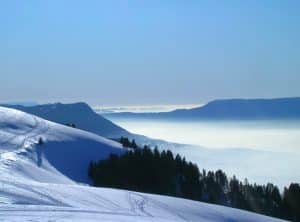
On the way back to Annecy, you will discover the Bauges Massif and finally the favourite mountain of the people of Annecy: the Semnoz.
The Aravis massif
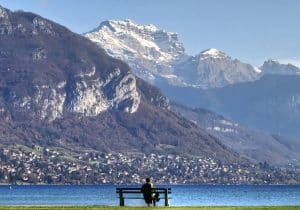
This massif is home to many winter sports resorts close to Annecy such as La Clusaz, Megève, Le Grand-Bornand and Combloux. Its main peaks are Mont Charvet, Tardevant, tête de l’Aulp and pointe de Merdassier. The Beauregard plateau has magnificent cross-country ski trails in the middle of the natural alpine environment.
La Mandallaz
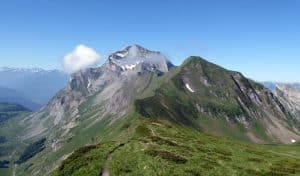
The Mandallaz mountain is located to the north west of the town of Annecy and is 8 km long and 4 km wide. It is located in the communes of Cuvat, Sillingy, Epagny-Metz-Tessy, La Balme de Sillingy, Pringy and Choisy. A little further on towards Switzerland, there is the Salève mountain which belongs to the Pre-Alps massif.
These peaks allow the practice of many sports such as hiking, downhill skiing, cross-country skiing and mountain biking. It is also ideal for beautiful family walks.
The Col de la Forclaz
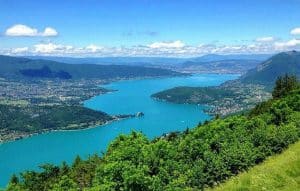
The Col de la Forclaz is a unique playground for cycling, paragliding, skiing and tree climbing enthusiasts. The view over Lake Annecy is a marvel for photography enthusiasts.
The fauna and flora of the Haute-Savoie mountains
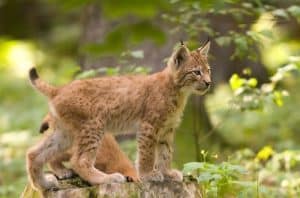
The department, which is largely made up of natural mountain areas, is home to a great diversity of animal and plant species. Half of the flower species found in France are found in Haute-Savoie. In terms of animals, rare and protected species live only in these mountain ranges, they constitute the fauna of Haute-Savoie.
During your walks, you may be lucky enough to see: a golden eagle, a young beaked duck, a jackdaw, a bearded vulture. The latter is a large vulture with a 2.8 m wingspan that was reintroduced into the Alps a few years ago. Vegetarian mammals include marmots, hares, mountain hares, ptarmigan, chamois, ibex, deer and roe deer. More difficult to observe, the forests are home to large carnivorous mammals such as the wolf, the lynx, the fox and the small ermine.
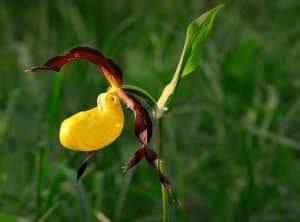
The flora of the mountains near Annecy is home to many plant species, some of which are only found in the Alps. For example: the snow gentian which produces the liqueur of the same name. More difficult to find, you may be lucky enough to see the legendary Edelweiss. More common species include: white genepi, which also produces a liqueur, alpine artemisia, snow heather, vanilla orchid and mountain houseleek. Orchids are also present in our mountains, including the magnificent Venus hoof.
Safety in the mountains
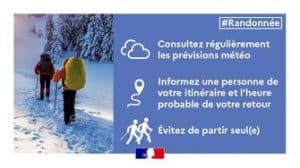 The mountains are a natural environment far from rescue centres. Depending on your itinerary, if you are in difficulty, you will not necessarily come across other hikers. Here are some safety tips to consider before you head out into the mountains:
The mountains are a natural environment far from rescue centres. Depending on your itinerary, if you are in difficulty, you will not necessarily come across other hikers. Here are some safety tips to consider before you head out into the mountains:
- Use mountain walking shoes that provide good ankle support.
- Take a mobile phone and a map, as the 4G network is not available for guidance.
- Take a small first aid kit including snake venom.
- Bring warm clothing if necessary, as the temperature can drop quickly.
- Sunglasses, hats and sunscreen are a must.
- Tell your friends and family about your tour so that they can alert the emergency services in case of difficulties.
- Take enough water and food depending on the hike.
- If you come across a wild animal, keep your distance. If it is a wild boar, don’t run away, back away slowly.
It is also essential to check the weather to ensure that it is favourable for the duration of the trip.
















